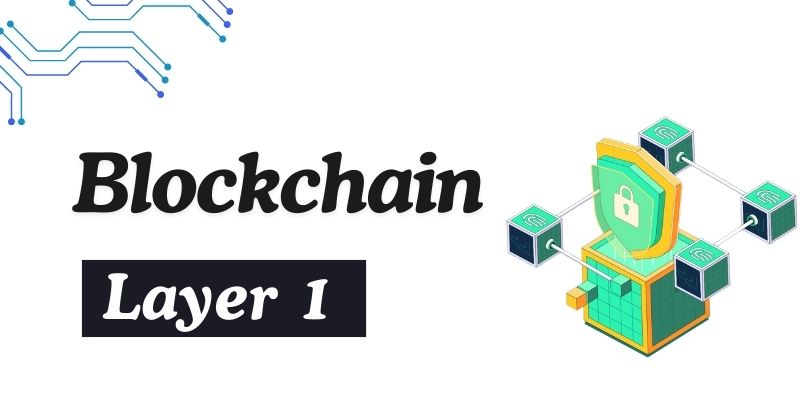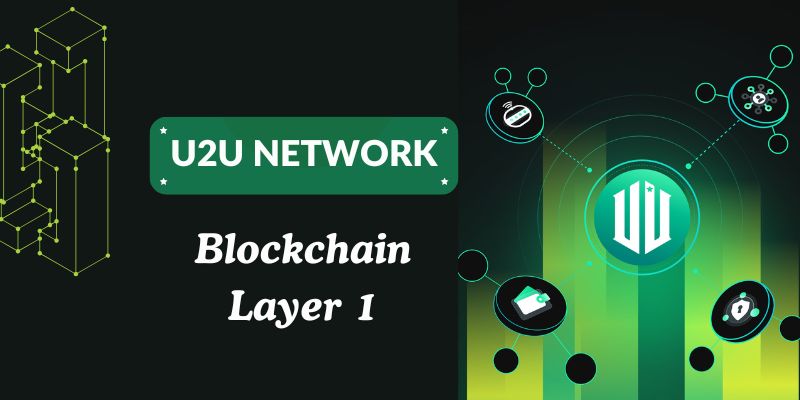The blockchain industry has experienced exponential growth, but its backbone remains the Layer 1 platforms that underpin decentralized networks. These foundational layers are where the most transformative innovation occurs, enabling everything from secure transactions to complex decentralized applications (DApps). As we navigate 2025, the evolution of Blockchain Layer 1 platforms warrants a deep dive into their strategic potential, technological advancements, and market impact.
The Role of Layer 1 Platforms in the Blockchain Ecosystem
Layer 1 platforms are the foundational pillars of the blockchain ecosystem, providing the basic infrastructure on which all subsequent blockchain functionalities are built. These platforms are not just critical for recording and validating transactions but also define the underlying protocols that govern a blockchain’s operation, including its consensus mechanisms and security frameworks. This makes Layer 1 the essential bedrock for any blockchain’s scalability, interoperability, and overall reliability.
Foundational Infrastructure: At its core, a Layer 1 blockchain is the first and most fundamental layer where blockchain transactions occur directly. This layer includes the blockchain protocol itself, which defines the rules of network operations from how transactions are structured to how they’re validated. For instance, Bitcoin operates on a Proof of Work (PoW) model, which, while secure, has raised concerns over energy consumption and speed as the network scales.

Scalability and Performance: Scalability remains a central challenge for Layer 1 platforms. As blockchain technology is adopted more widely, the ability of these platforms to process a high volume of transactions efficiently is paramount. Solutions like Ethereum’s transition from PoW to a Proof of Stake (PoS) model illustrate efforts to enhance scalability while reducing the energy footprint. This shift not only addresses environmental concerns but also aims to boost transaction speed and volume handling, crucial for Ethereum’s vast network of decentralized applications.
Interoperability Concerns: Interoperability is another critical aspect of Layer 1 platforms, involving the platforms’ ability to communicate and operate with other blockchains. This is increasingly important as the number of blockchain networks grows, and there is a need for seamless asset and data transfer across diverse platforms. Initiatives like Polkadot and Cosmos are examples of Layer 1 solutions designed with interoperability as a core feature, enabling different blockchains to connect and interact via a shared framework.
Security and Decentralization: The balance between security and decentralization also plays a significant role in the design and function of Layer 1 platforms. These platforms must ensure robust security to prevent attacks that could compromise data integrity and user assets. However, achieving high security often involves certain trade-offs with decentralization, as more centralized networks can implement stringent security controls more easily. The challenge for Layer 1 is to maintain a decentralized ethos without compromising on security measures, a balance that is crucial for user trust and network longevity.
Adaptability to Market Needs: As blockchain technology continues to evolve, Layer 1 platforms must also adapt to changing market demands. This includes supporting a range of applications from DeFi to NFTs and beyond, catering to a diverse user base from institutional investors to individual hobbyists. The ability of these platforms to remain flexible and evolve with user needs will be a significant determinant of their success.
Key Dynamics Shaping Layer 1 Blockchain Development
In 2025, Layer 1 blockchains are undergoing transformative developments that redefine their efficiency and sustainability, crucially shaping the next generation of blockchain technology. This evolution is marked by a shift from the energy-intensive Proof of Work (PoW) mechanisms to more sustainable Proof of Stake (PoS) systems. Platforms such as Ethereum 2.0 are leading this change, not only to lessen environmental impact but also to overcome the scalability constraints that have traditionally restricted blockchain networks. By adopting PoS, these platforms can handle increasing transaction volumes while still maintaining high security standards, thereby supporting more extensive and complex applications on their networks.
However, despite these advancements in sustainability and efficiency, scalability remains a nuanced challenge with significant implications. Solana, for example, has demonstrated exceptional capability in processing transactions swiftly through its Proof of History (PoH) mechanism, which integrates timestamps into transactions to enhance speed. While this innovation has positioned Solana as a leader in throughput, it has also faced criticism following several network outages, highlighting the ongoing tension between achieving high speed and ensuring network reliability.
Moreover, Avalanche has ventured into developing a modular network structure using subnets that allow for tailored blockchain solutions, improving scalability and operational flexibility. This approach enables specific customization of blockchain parameters to suit different applications, enhancing performance and user experience. However, the challenge for Avalanche lies in gaining broader adoption, which is critical for establishing its credibility and influence in the competitive blockchain sector.
Interoperability has also emerged as a critical factor in the evolution of Layer 1 blockchains. As the industry moves away from operating in silos, the ability for different blockchain networks to interact seamlessly has become more crucial. New platforms like U2U are embedding interoperability into their foundational architecture, facilitating the smooth transfer of data and assets across diverse blockchain landscapes. This strategic focus not only enhances user experience by eliminating barriers between different blockchain systems but also positions these platforms at the forefront of a future where multi-chain ecosystems are the norm. Effective interoperability is essential for fostering a cohesive and robust blockchain ecosystem, where decentralized applications can operate across multiple platforms without friction, thus greatly expanding their reach and functional capabilities.
These key dynamics sustainability, scalability, and interoperability are shaping the strategic development of Layer 1 blockchain platforms. As these platforms continue to evolve, their ability to integrate these crucial elements will determine their success and longevity in the blockchain ecosystem, enabling them to support a wider array of applications and meet the growing demands of a diverse user base.
The Strategic Importance of Emerging Players in the Blockchain Space
As the blockchain landscape continues to expand and mature, the dominance of established platforms like Ethereum is increasingly complemented by the rise of innovative newcomers such as Aptos and U2U. These emerging platforms are carving out significant niches by addressing specific needs within the market, demonstrating a keen understanding of both the technological and user-centric aspects of blockchain technology.
Aptos: Enhancing Developer Empowerment Through Innovative Technology Aptos stands out with its adoption of the Move programming language, a strategic choice aimed at bolstering security and efficiency, particularly within the domain of smart contracts. Move’s design is purpose-built to prevent common security issues found in blockchain applications, thereby offering a more robust foundation for developers. This focus on providing advanced, developer-centric tools and features is a direct response to the need for more secure and sophisticated blockchain applications. By facilitating a higher degree of innovation at the developer level, Aptos is not merely contributing to the blockchain ecosystem but is reshaping how blockchain applications are developed and secured.

U2U: Focusing on User-Centricity and Interoperability In contrast to Aptos’ developer-focused approach, U2U prioritizes the end-user experience and interoperability of its platform. U2U’s strategy is deeply embedded in the philosophy of making blockchain technology intuitive and accessible for everyday users, not just for those with technical expertise. This involves simplifying user-to-user interactions and ensuring that these interactions are as seamless and straightforward as possible. Moreover, U2U’s commitment to interoperability reflects a forward-thinking approach to blockchain development—understanding that the future of blockchain lies in interconnected networks that allow for effortless cross-platform transactions and communication. By enhancing user experience and interoperability, U2U aims to democratize access to blockchain technology, making it a more inclusive tool that serves a broader demographic.
Strategic Implications for the Blockchain Ecosystem The entry and growth of platforms like Aptos and U2U highlight a significant shift within the blockchain industry towards more specialized and user-oriented solutions. This evolution is critical as it reflects the growing maturity of the blockchain sector, where the focus is expanding from purely technical achievements to include enhanced user experience and broader accessibility.
As blockchain technology continues to permeate various sectors, the ability of new platforms to offer simplified and efficient user interfaces, coupled with robust developer tools, will likely grant them a considerable competitive advantage. This strategic positioning not only allows them to fill existing gaps within the market but also positions them as key drivers in the widespread adoption and implementation of blockchain technology across different industries.
Thus, the strategic importance of emerging players in the blockchain space cannot be overstated. By aligning their offerings with the needs of a diverse user base and by pushing the boundaries of what blockchain technology can achieve, these platforms are not just participants but are active shapers of the future landscape of blockchain technology. Their ability to innovate in response to both developer and user needs will likely challenge the dominance of established platforms, marking a new era of competition and innovation in the blockchain sector.
Challenges and Opportunities for Layer 1 Blockchain Platforms
Layer 1 blockchain platforms, while laden with transformative potential, encounter several substantial challenges that could impact their efficacy and adoption. Foremost among these is security. Since these platforms form the foundational layer of the blockchain ecosystem, vulnerabilities at this level can have cascading effects, potentially compromising entire networks. Ensuring robust security measures that can thwart a wide array of threats is critical for maintaining trust and functionality.
Another significant challenge is finding the right equilibrium between decentralization and efficiency. Blockchain technology is premised on decentralization, offering a counterpoint to centralized financial and data systems. However, achieving high throughput and scalability often involves some level of centralization, which can contravene the fundamental principles of blockchain. This tension between maintaining true decentralization and achieving necessary efficiency remains a delicate balancing act for Layer 1 platforms.
Despite these challenges, the opportunities that these platforms present are considerable and could greatly outweigh the potential pitfalls. Decentralized finance (DeFi) and non-fungible tokens (NFTs) are two sectors where Layer 1 platforms continue to play a pivotal role, driving significant growth. These areas not only provide new financial opportunities and innovations in asset management and ownership but also serve as test beds for the scalability and functionality of underlying blockchain technologies.
Moreover, the gradual increase in institutional adoption is reshaping the blockchain landscape. Enterprises are increasingly drawn to blockchain technologies for their potential to enhance operational efficiencies, transparency, and security. This shift is not only expanding the use case scenarios for blockchain but also stimulating further investment into Layer 1 technology development. Such engagements are vital as they bring in substantial funding for research and development, further pushing the boundaries of what Layer 1 platforms can achieve.
In essence, while Layer 1 blockchain platforms navigate complex challenges, the burgeoning opportunities in DeFi, NFTs, and enterprise adoption provide fertile ground for innovation and expansion, setting the stage for these technologies to redefine interactions and transactions in the digital age.
A Strategic Outlook for 2025: The Evolution of Blockchain Layer 1 Platforms
As the blockchain landscape evolves into 2025, the future trajectory of Layer 1 platforms hinges on their adaptability and commitment to innovation. For established players in the blockchain space, maintaining a competitive edge will require ongoing enhancements to scalability and user experience. These platforms must not only continue to handle increasing transaction volumes efficiently but also ensure that their interfaces and functionalities meet the evolving expectations of users.

For newer and more agile platforms like U2U, the focus should be on capitalizing on their nimbleness to quickly adapt to market demands and seize emerging opportunities. Their ability to respond to changes in user needs and industry standards can set them apart from more established entities, providing a critical advantage in a rapidly growing market.
Interoperability is poised to become a pivotal differentiator in the near future. As blockchain technology continues to permeate different sectors, the ability of Layer 1 platforms to facilitate seamless interactions across various blockchain networks will likely dictate their market leadership. Platforms that can integrate smoothly with others, enabling efficient cross-chain transactions and data sharing, will elevate their strategic position and attract a broader user base.
Additionally, sustainability will play an increasingly central role in the strategic development of blockchain technologies. As societal and regulatory pressures towards environmentally friendly practices intensify, the adoption of energy-efficient consensus mechanisms such as Proof of Stake (PoS) will become critical. Platforms that prioritize and innovate in reducing their environmental impact will not only align with global sustainability goals but also appeal to a more conscientious investor and user base, further solidifying their standing in the market.
Overall, the strategic outlook for Layer 1 blockchain platforms in 2025 revolves around a core theme: those that can effectively combine adaptability, interoperability, and sustainability are likely to excel. As the digital landscape continues to expand and diversify, these attributes will be crucial in defining the leaders of the blockchain revolution.
In conclusion, Blockchain Layer 1 platforms represent the cornerstone of decentralized innovation. For stakeholders whether investors, developers, or users understanding the dynamics of these foundational networks is essential for navigating and capitalizing on the blockchain revolution. By strategically addressing scalability, security, and user-centricity, Layer 1 platforms are poised to shape the future of decentralized technology. We’re glad you found our article interesting. Follow us for more


